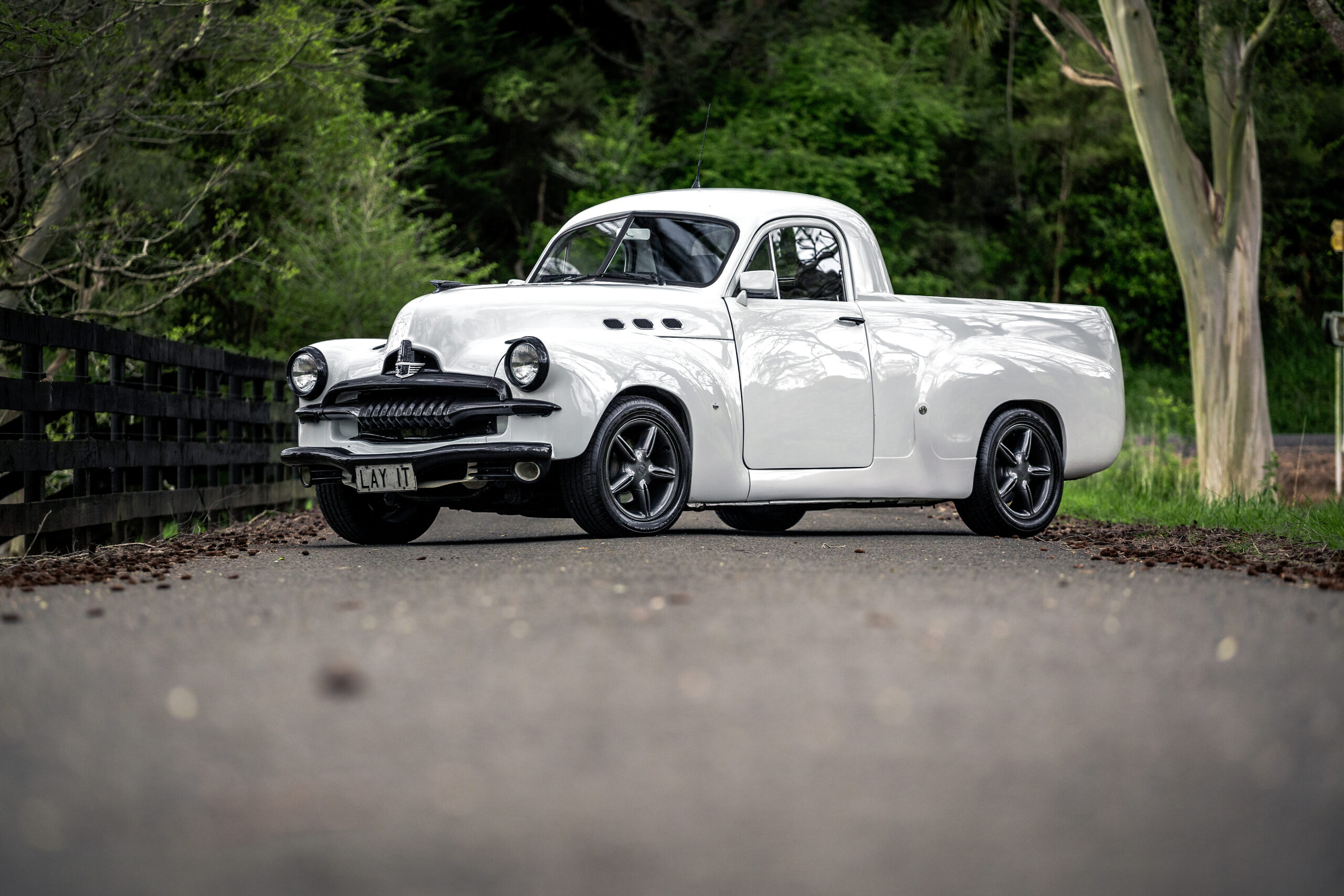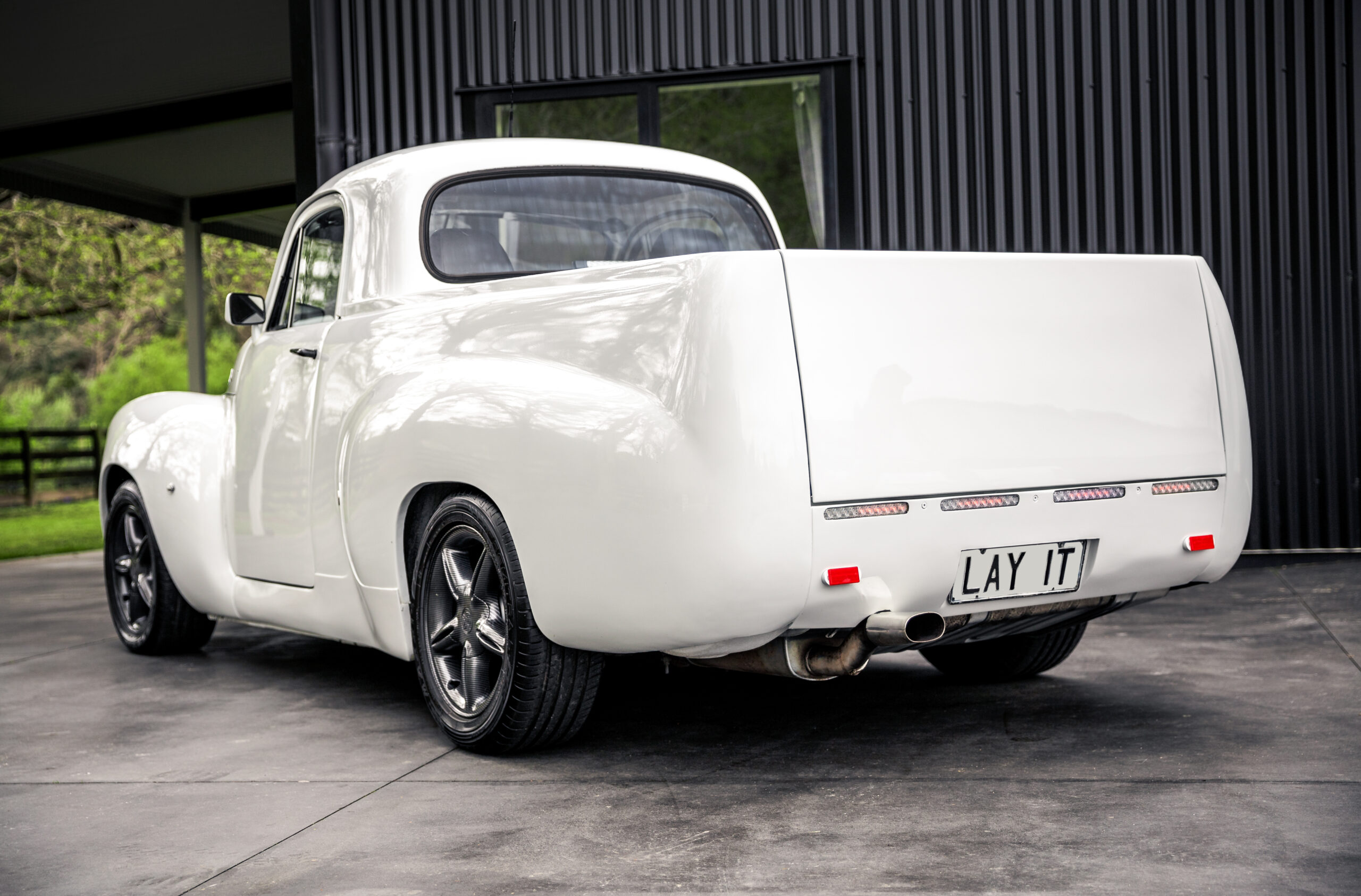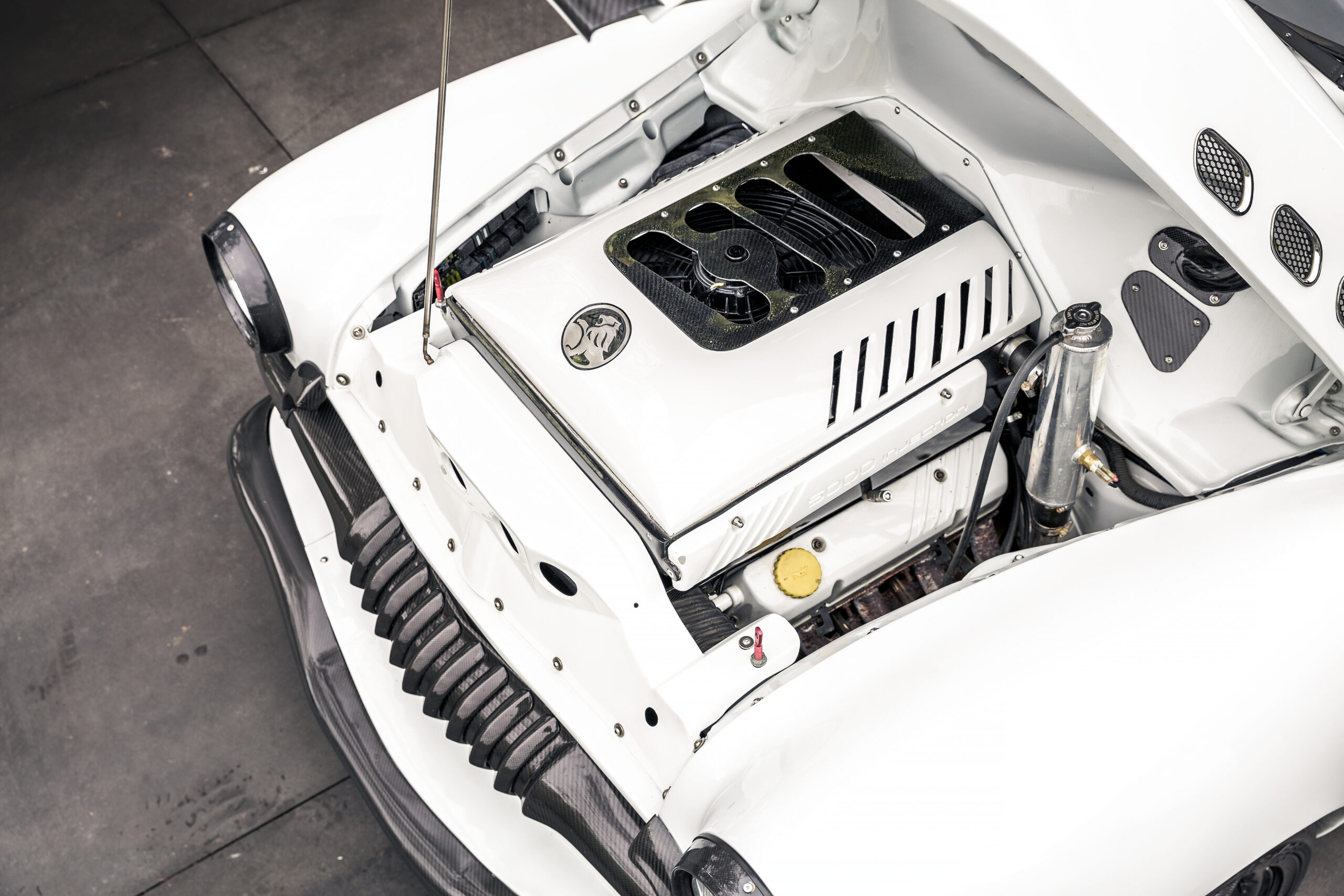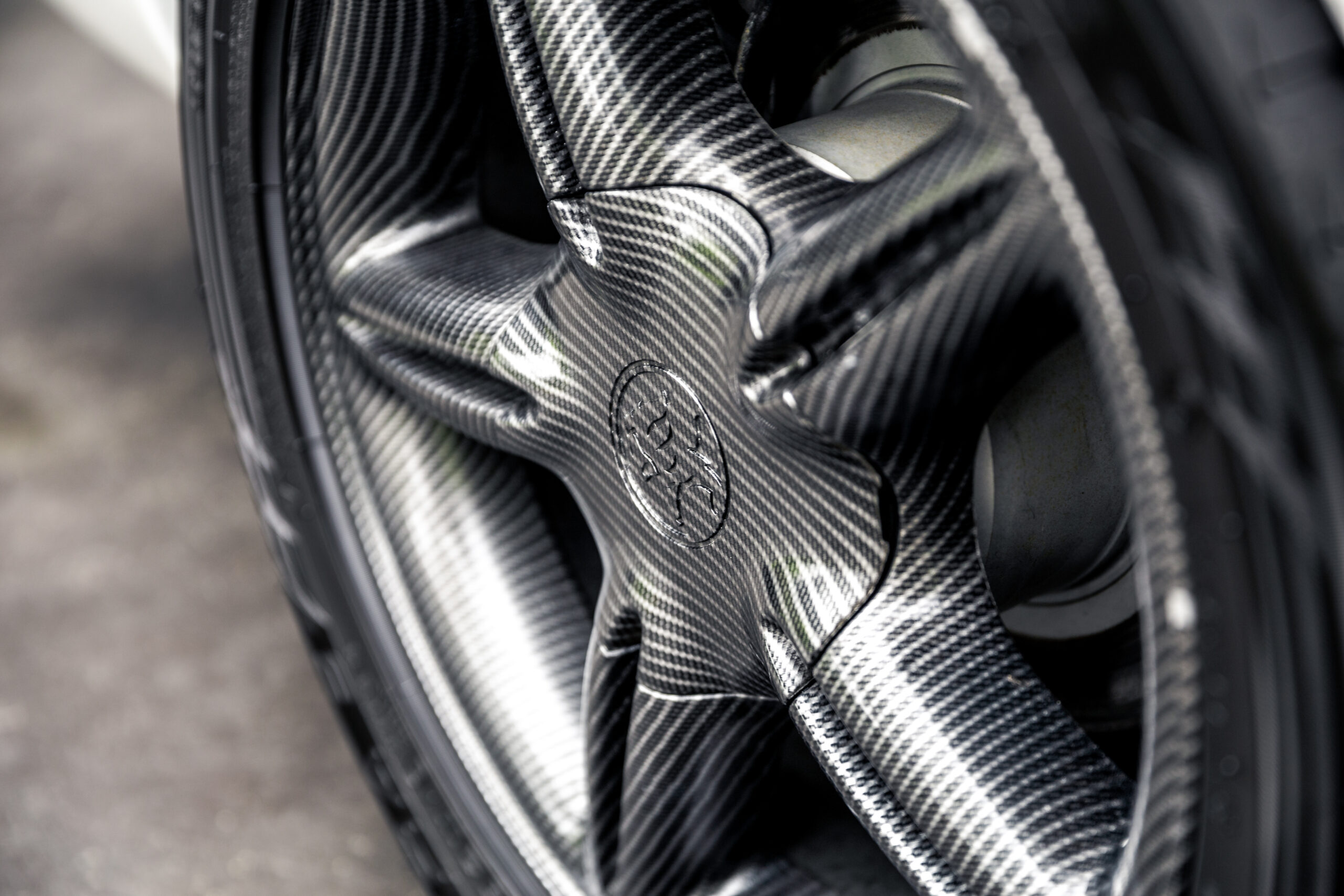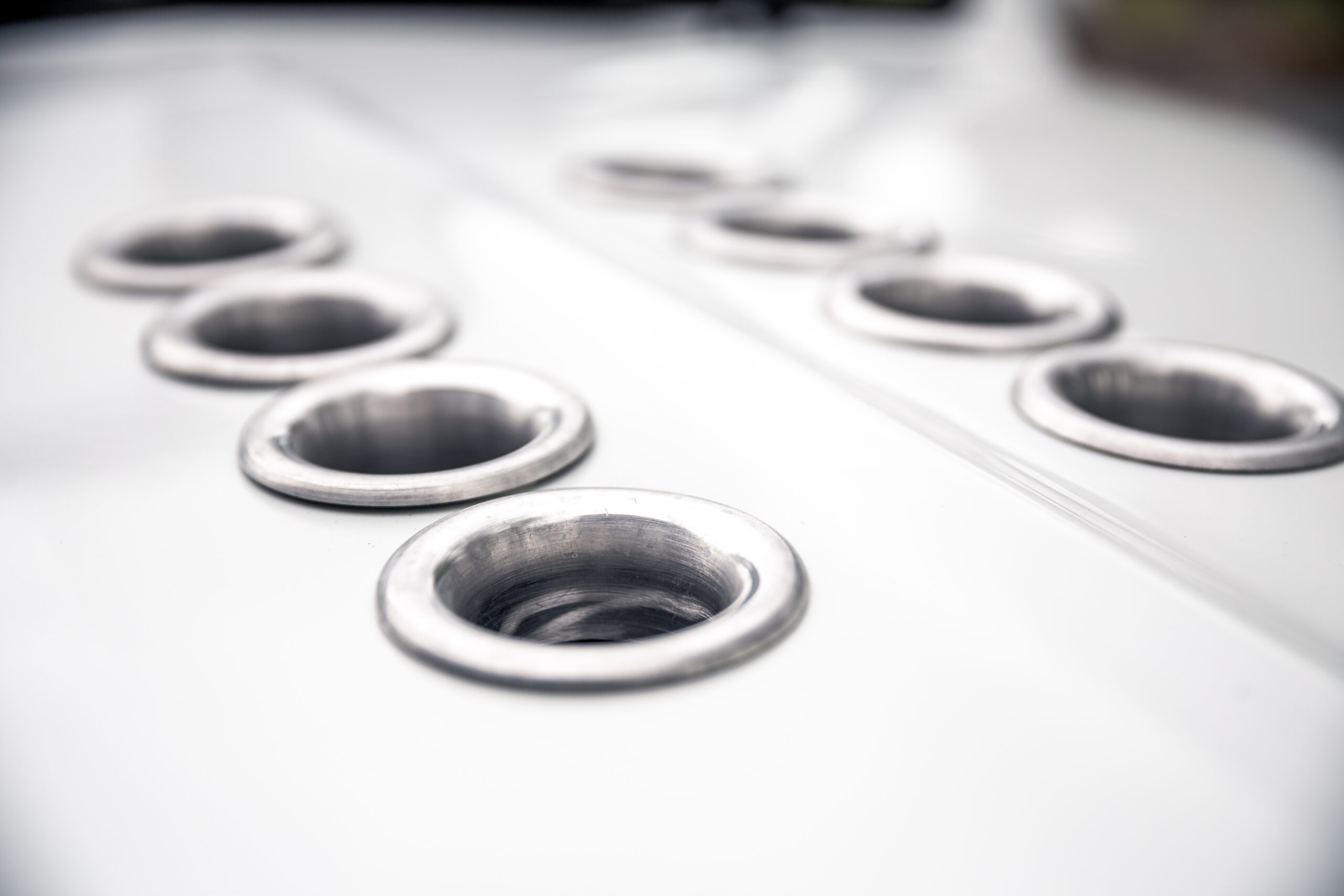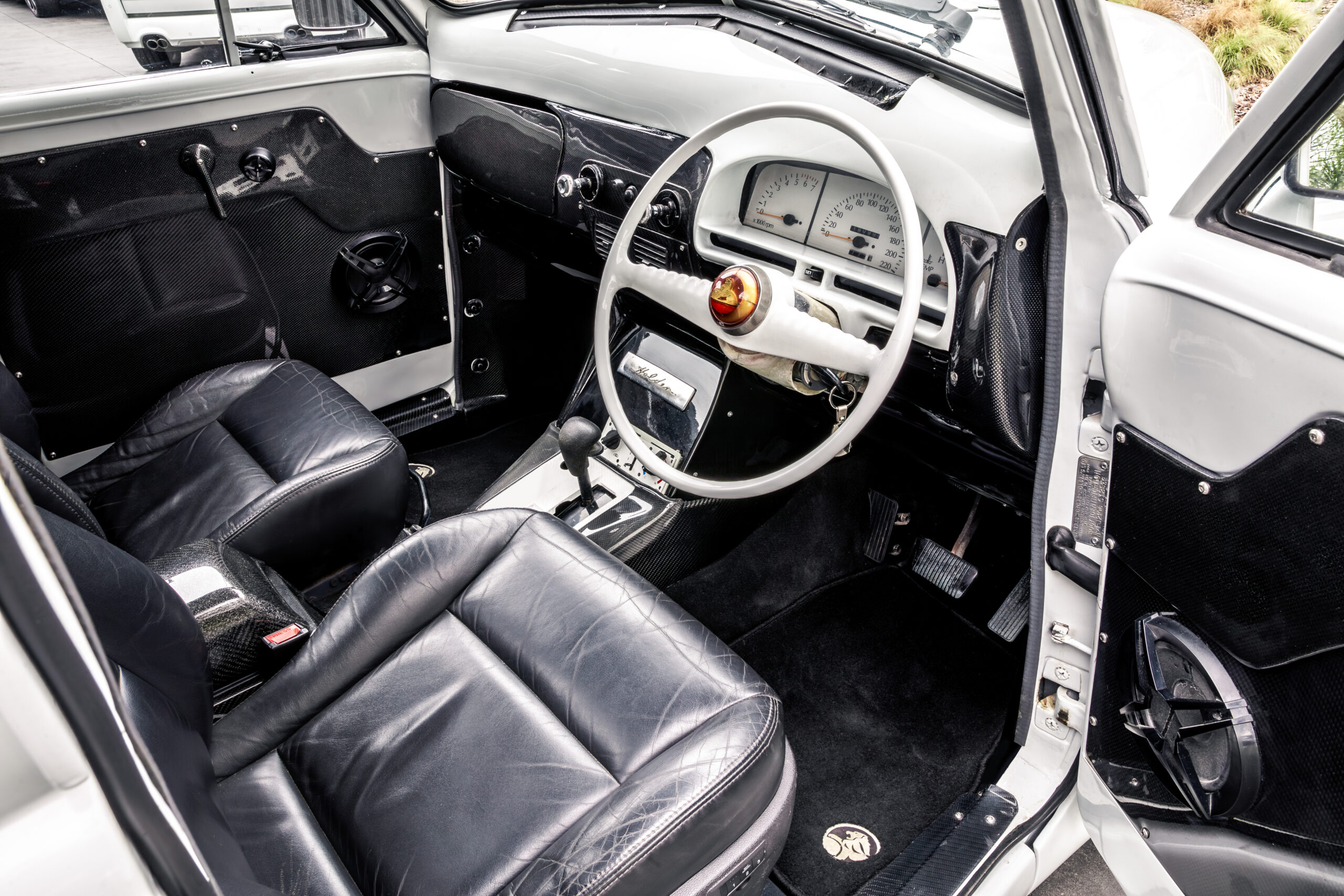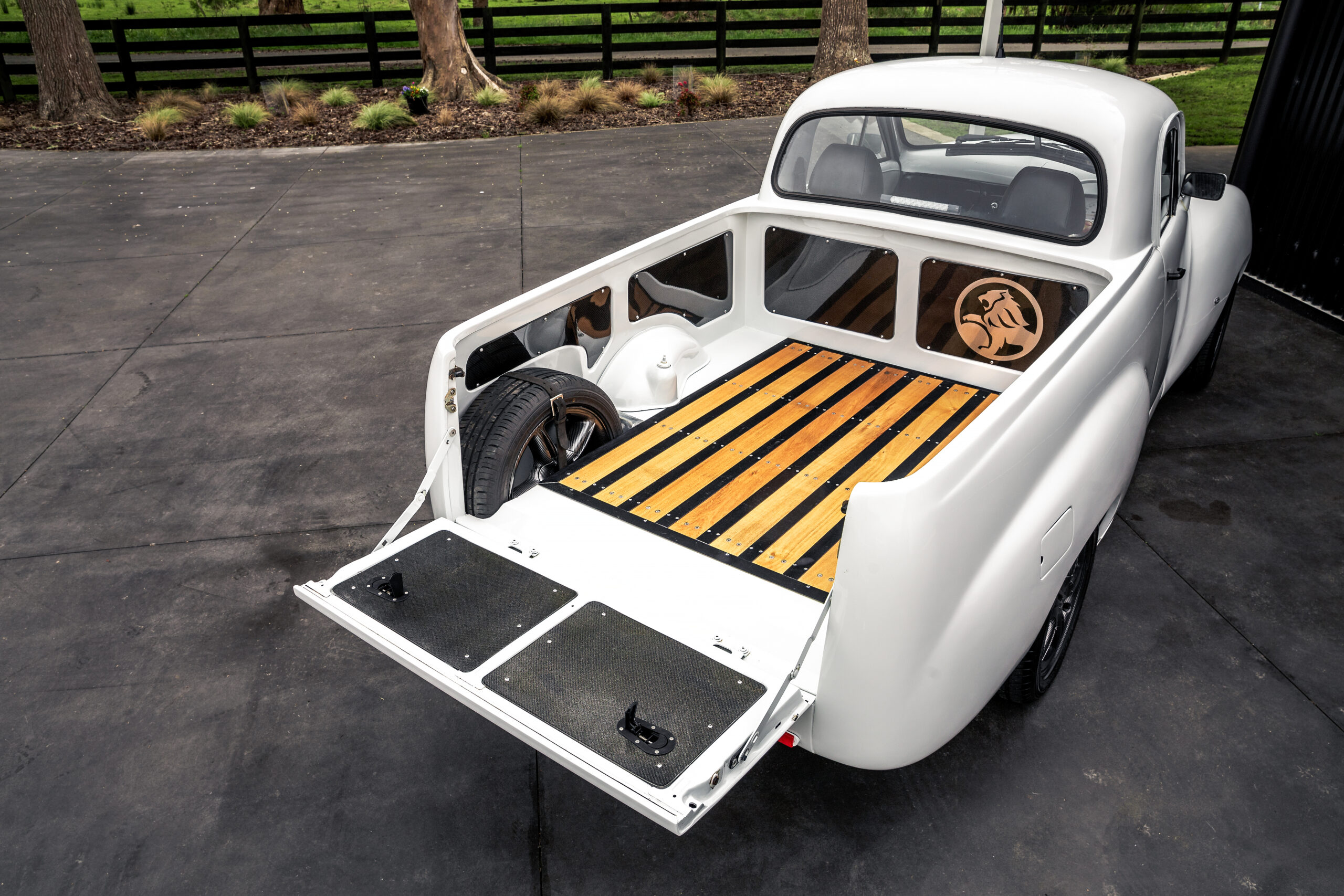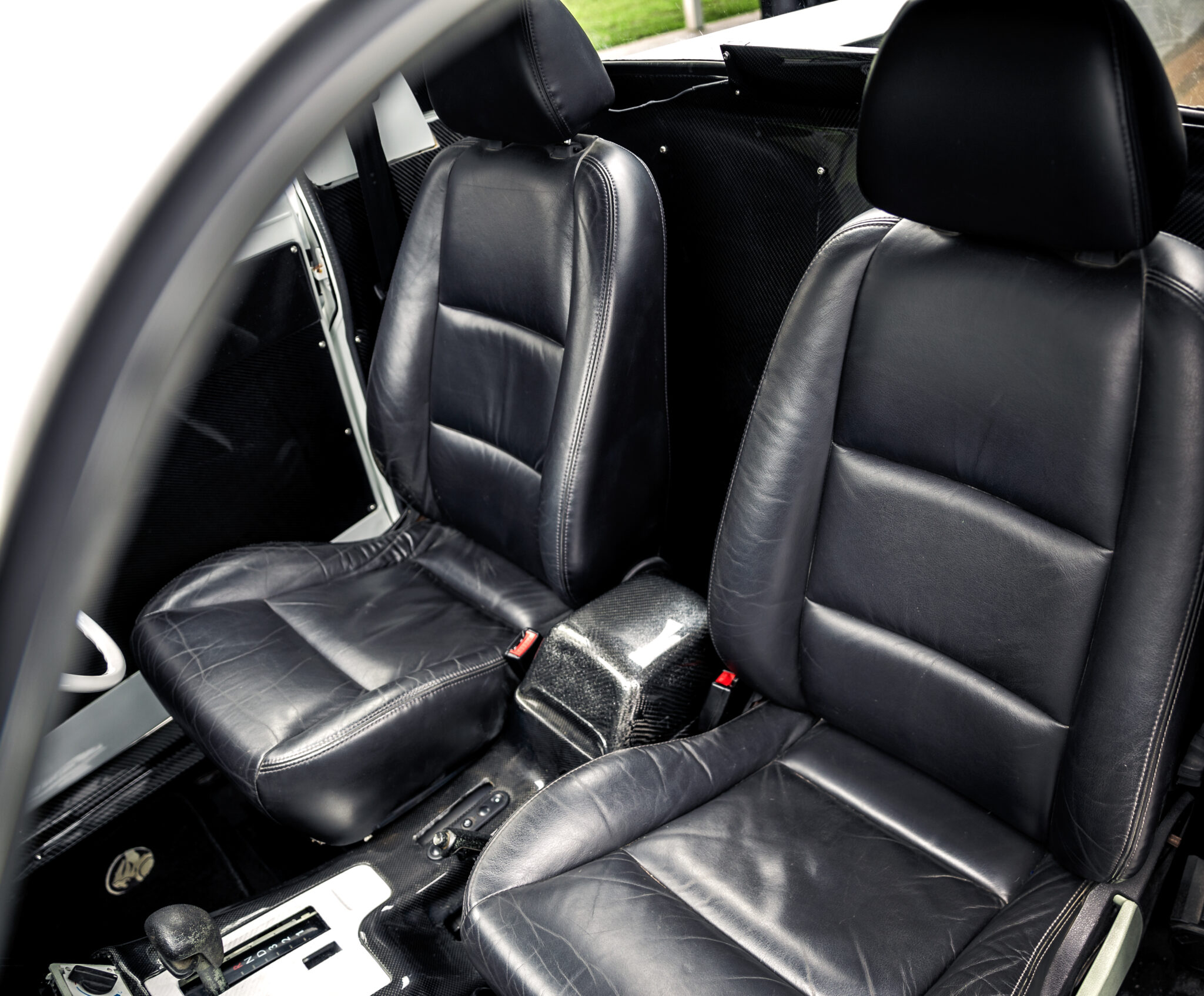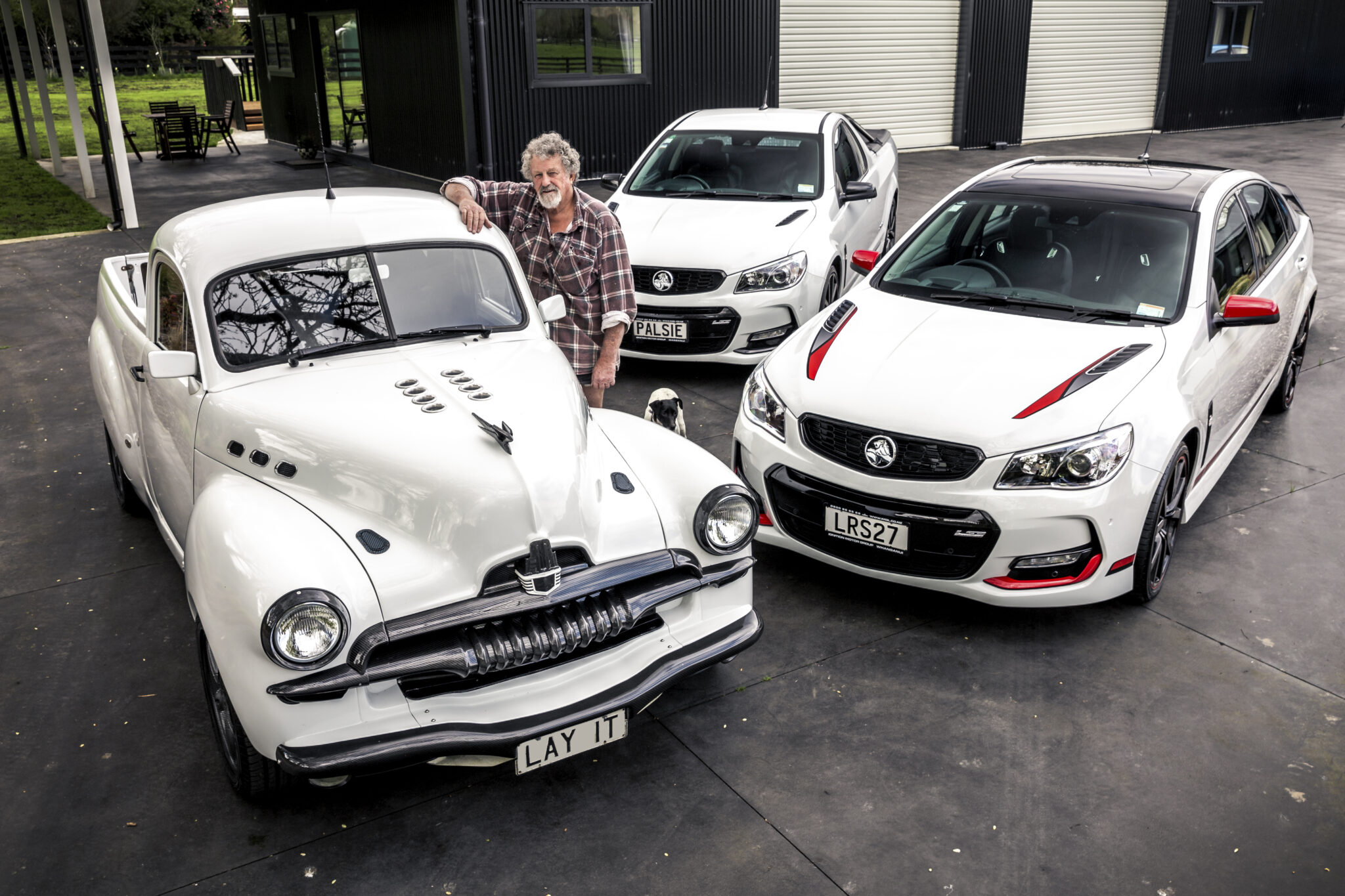Words: Todd Wylie Photos: Rod Dunn
The story of this ‘56 FJ Holden starts with so many stereotypes that you’d almost think we were making it up. The owner is Wayne ‘Mad Dog’ Maddox, and yep, that nickname is stereotype number one for a bloke from rural New Zealand. The ute itself has been transformed from a barn find by a handful of clever bastards using plenty of Kiwi ingenuity in the back shed — making stereotypes two and three. And, of course, being an FJ Holden that once belonged to the owner of the local pub kind of cements this as a classic tale.
Wayne, who got his nickname through years of racing jet sprint boats across Australasia has also dabbled with jet boat marathon events, so clearly he’s got high-octane race gas coursing through his veins. He purchased the FJ from the son of its original owner, who, you guessed it, owned the local pub where Mad Dog was a frequent flier. Over a few beers, or maybe more than a few — given the fact the car had been parked for 20 years — a deal was done for it to change hands. Understandably it wasn’t in great nick, the fact it had a tree growing up through the tray is a great indication of the state of things.
Dropping it off to be sandblasted after purchase, there were definitely questions about if anything would come back once the rust was blown out. Clearly enough of it did to enable the build to begin.
Rather than tackle it himself though, he sent the car to the West Coast of the South Island to a little town called Ikamatua. If you’ve not heard of it, don’t worry, not many people have, but ironically its where the ute started its life belonging to a well-known local farming family: the O’Malleys. With a surname like that, it’s no surprise son Marty grew up to be a publican! Here in Ikamatua Mad Dog’s brother Barry would take over the reins, and over the next decade or so, the car and the plans for the car would evolve massively.
The initial instructions were to make it standard looking but to stand out, and Barry could paint it any colour he wanted. During the build, the scope changed, as did the colour requirements. As in 2017 when Wayne purchased a pair of the final VF Commodores, both were in Heron White. He then knew the FJ had to be the same colour too, but there were thousands of hours of work that needed to be done before any paint could go near the panels.
Although some of those hours would be spent on rust work, a larger part was dropping the body over a VS SS Commodore floor pan. The idea came about as the best way to deal with the rusty floor as well as give the car much more modern performance, handling, and braking. The difficulty is that a VS has a far larger footprint than an FJ, so it needed to be shortened 115mm in the centre section — 200mm from the front, 200mm in the back, and narrowed 100mm on each side. It was a very ambitious plan, but Barry came up with the idea of creating a thin metal buck to transfer the body shape over to the donor car to work out what was going and what was staying.
Plenty of cutting, grinding, and welding followed, all with enough care to cut away exactly the right parts and leave what was necessary. Falling into the latter category were the firewall and front chassis rails that needed to be integrated into the FJ’s shell and do so while looking like they were from the factory. The VS floor pan now underpins the cab, and even the rear rails have been retained, although now hidden below the custom deck.
During the transformation, the (unibody) chassis was strengthened, as were the sills, all while making sure everything was perfectly aligned. Barry only managed to catch a break when he had Kiwi Kustoms in Blenheim help out with the back end of the rear guards. Given the car’s extra 130mm of track width, and the fact the original front guards were shot, they needed to be remade from scratch, It was at this point that things took a turn, and the subject of using carbon fibre came up. Barry had some experience with composites, but never to the extent of building custom carbon fibre wide body front guards. This would become the first of many carbon components in the build, or, as the guys refer to it, the start of carbon dating. The start of the carbon work also led to the plan of replacing all of the previous bright work for a very unique look. Although from a distance it may simply look like many parts have been blacked out, the reality is much more complex. The bumpers, grille, hood ornament, and headlight surrounds have all been created in the lightweight composite material. Although the carbon may get the attention, there’s actually a lot more going on under the painted components too. Take the bonnet for example, it’s actually 20mm wider on each side, but modified so well that it goes unnoticed.
The carbon treatment is even more evident in the interior, where it covers almost every conceivable item from the roof lining down to the floor. Barry laughs that there are two compartments in the carbon fibre glovebox, one for speeding tickets yet to be paid, and the other for ones that have been paid. Given how clever the workmanship on the car is, we wouldn’t be surprised if he’s not actually joking. Although the dash itself looks like the original piece, it’s been built from scratch to look original with the addition of VS air vents and the VS instrument cluster. Keeping in mind that the car is in many ways a VS Commodore in a FJ body kit, Barry’s done well to make the interior look like it belongs in an FJ, but with modern twists.
Under the hood things get even more interesting. The stock 304ci Holden motor is sitting under what appears to be a unique engine cover, which, at a closer glance, is actually a top-mounted radiator. While plenty of eyebrows are sure to be raised at that concept, from all reports it works remarkably well, thanks in no small part to a very effective fan system and a vented bonnet. The need for this unique engineering was due to the car running the stock VS firewall, which didn’t leave enough length in the engine bay for the engine and a traditionally placed radiator.
Like the engine, the driveline remains stock VS, as do the brake and suspension with the exception of lowering springs being installed up front. As you can imagine with a set-up like this, and with the car even riding on (hydro dipped) VS wheels, it drives exactly as you would expect of a VS Commodore. The fact it looks nothing like one is a testament to the efforts and abilities of all involved. Even LVV Certifier Andy Smith who certified the vehicle, and has inspected thousands of cars in his time, has been heard extolling the car’s virtues. A build of this level obviously always takes longer than expected, but the end result has been worthwhile. The Mad Dog is living up to that nickname, not on the water, but on the road in the culmination of his own vision and his brother’s ability. There’s nothing stereotypical about that at all.
SPEC LIST
Vehicle: 1956 Holden FJ Ute
Engine: 304ci Holden, custom intake, stock internals, 2.5-inch exhaust, custom radiator, electric fan, carbon ducting
Driveline: Holden 700R4 4-speed automatic transmission, custom driveshaft, VS Commodore diff
Suspension: VS Commodore suspension, front lowering springs, 4-link rear
Brakes: Holden ABS system, 289mm front rotors, 279mm rear rotors
Wheels/Tyres: 16×7-inch VS Commodore wheels, 225/50R16 tyres
Exterior: Widened carbon fibre front guards, widened carbon fibre bonnet, carbon fibre rear deck panels, carbon fibre bumpers, shaved badges, custom front valance, concealed indicators, Heron White paint
Chassis: Shortened and narrowed Holden Commodore VS SS floor pan
Interior: Leather electric bucket seats, FJ Holden steering wheel, VS Commodore cluster, raised steering column, carbon fibre dash, carbon fibre door trims, carbon fibre hood lining, carbon fibre kick panels, Pioneer audio
Performance: 230hp
Driver: Wayne “Mad Dog” Keenan
Age: 70 going on 17
Occupation: Concrete placer
Previously owned cars: Plenty of Holdens including Bathurst Monaro, currently have VF sedan and VF ute both in Heron White
Dream car: Any Holden
Why the FJ?: Old mate in a pub, what else could I do.
Build time: 7000 hrs.
Length of ownership: 15 years
Wayne thanks: Barry for all the hard work making the dream become a reality, Neville Blacktopp who sadly died of cancer mid build, Bruce Wright who picked up some body work after Neville’s passing, Hokitika Collision Centre for painting and clear coat





